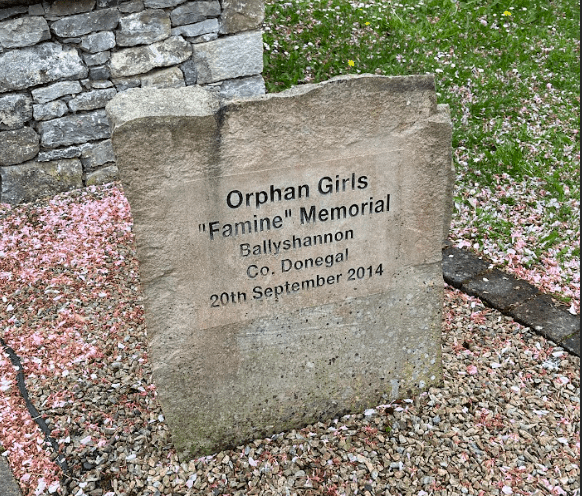Social justice, Empathy, and Global Citizenship: Darry & the Bloody Sunday museum.
Today we started the day with the lecture of Social Justice, Empathy and Global Citizenship. We went over the civil rights movements of Ireland and America, learning that Ireland’s movement for Catholic rights was inspired by America’s non-violent movement for racial civil rights. We learned about Bloody Sunday and that the people who were lost got justified in the end, after a lengthy investigation, which found British troops fired into the crowd and caused violence during the peaceable protest.

The Orphan Girls Famine Memorial was erected in 2014 by family members of the 19 girls who were sent to Sydney, Australia to help populate the newly founded country. There legacy was kept alive through their family members who know the sacrifice that was made by their exportation from Ireland.


The famine pot in the middle of The Orphan Girl Famine Memorial. Famine pots were communal feed pots where all those who were able contributed to the meal. These pots were responsible for countless deaths by spreading typhoid fever and numerous other infectious diseases from unsanitary conditions.
Before we went to Darry, we stopped in Ballyshannon to see the Orphan Girl Famine memorial, learn about Famine Pots, and view an abandoned workhouse. Workhouses were built to house, and only house, the poor during the great famines. These places were created to be as uncomfortable as possible, so the poor would be motivated to work and leave. These places were deathtraps and the famine pots of communal food, for those who could contribute, threw in their meager food to create a thin stew. These pots, and the unhygienic accommodation of the workhouses, spread typhoid and other infection throughout the workhouse population. This was a miserable existence and an example of how the poor were viewed and treated by the larger society.
There were very few options for the poor and destitute who were starving because of the potato famine; emigrate to America as cargo in the hold of ships or face the workhouses, the appalling conditions, disease, and continued starvation of a society that did not care about the poor.



Next, we were on our way to Derry. To see all the places that we went over in our lecture. We visited the Bogside Murals along with the Museum of Free Derry as a group.
The museum was very heartfelt, and you can feel what the family’s went through during the Civil Rights movement and Bloody Sunday. Bloody Sunday occurred Sunday, January 30 1972, when 14 lost their lives and another 17 harmed when British troops fired into a crowd of Catholic Civil Rights protesters. The period after came to be known as “The Troubles”. A time during which non-violent resistance and protest was replaced with premilitary style domestic terrorism in an effort to gain Catholic civil rights.
The victims of the Bloody Sunday massacre were only cleared of criminal charges 38 years later when the Saville report was read in 2010. This 12-year investigation into the shootings found that British troops shot into the crowd and then murdered those who injured or helping the injured on the street. Prime Minister David Cameron apologized for the actions of the military saying, “What happened on Bloody Sunday was both unjustified and unjustifiable. It was wrong.”



It was a somber day meant for reflection and learning. The struggle for civil rights is a subject that is near and dear to the United States and to Ireland. Subjugation of anyone, regardless of the reason, can not be tolerated. It was not until April 10th, 1998, until the Good Friday Agreement was signed, that the terrorism of the Troubles came to an end. This accord was only made possible by the continued dialogue between unionist parties, the political wings of both the UVF and UDA, Sinn Fein and the British Government. The agreement created a plan for a power-sharing Northern Ireland Assembly and outlined plans for future relationships between Ireland and Britain.